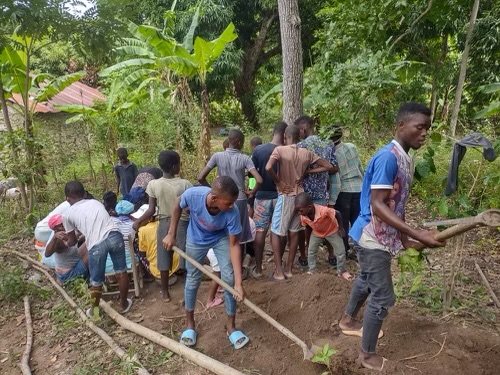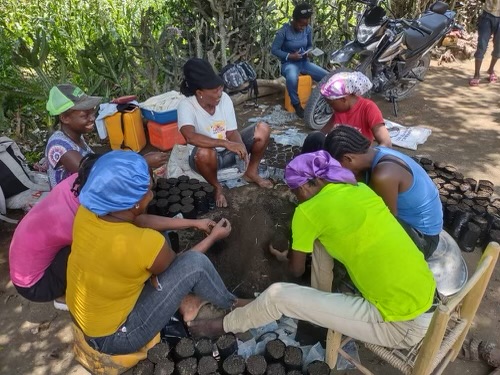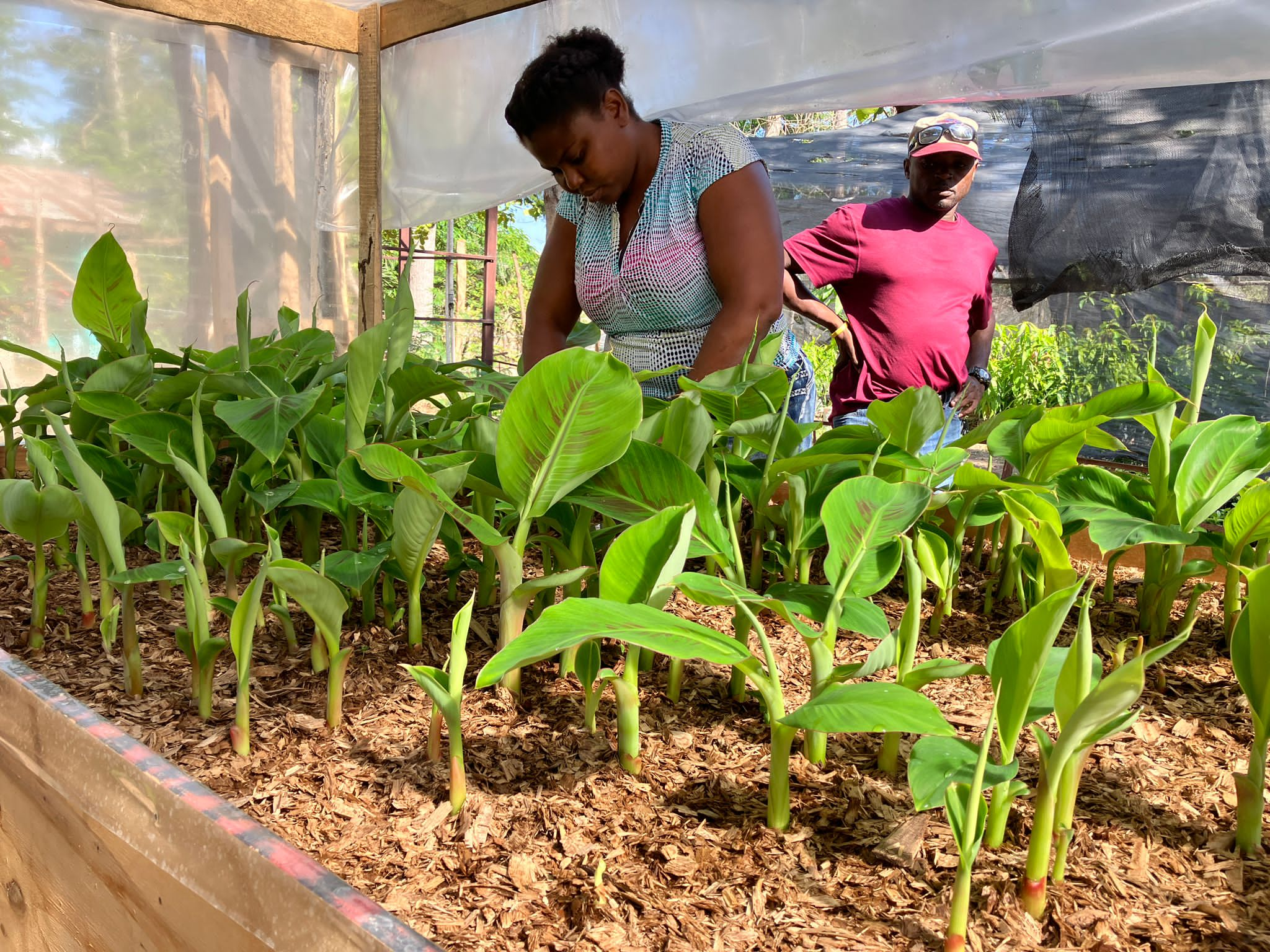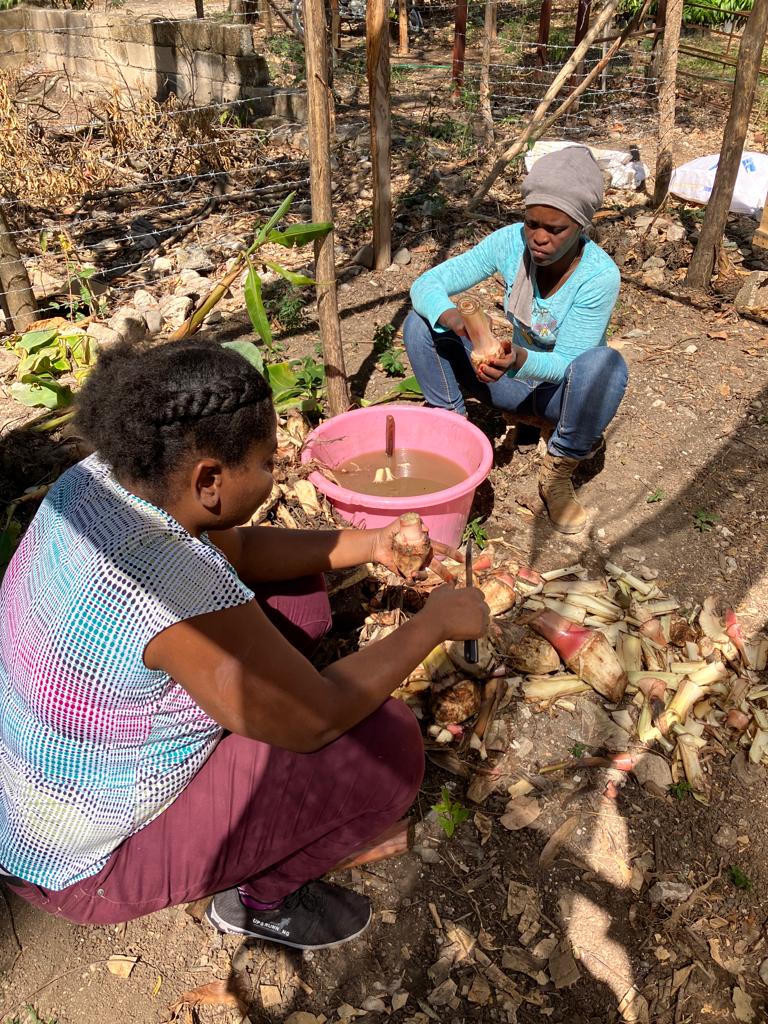Quixote Center’s Theory of Change in Haiti: Part I
Consistent with our mission statement, Quixote Center’s work in Haiti prioritizes systemic change. Our theory of change has three aspects:
Quixote Center’s work in Haiti prioritizes systemic change. Our theory of change has three aspects:




Quixote Center initially launched Haiti Reborn in 1991 during a period of renewal in Haiti, following the election of Aristide and the rise of Lavalas, a popular movement for democratic reform. The coup that ousted Aristide later that year led us to focus our efforts on speaking out against United States intervention in Haiti. US foreign policy as well as development aid still has enormous influence over Haiti and its future. US NGOs and churches also funnel significant funds into Haiti, leading many Haitians to dub their country “the republic of NGOs.”
The Quixote Center partners with Haitian organizations to support smallholder farmers to build sustainable livelihoods from agriculture and reforestation. The Jean Marie Vincent Formation Center located in Grepen, Haiti, is our primary partner in the north while in the south DCCH, the Christian Community Development in Haiti is our main partner in Gouin, Les Cayes.
There is a major humanitarian crisis that is worsening the medical, economic, housing, security and other social aspects of life in Gros Morne. The Quixote Center is working with our local partners to support vulnerable familiesin through our Emergency Campaign. You can read more and support the campaign HERE.
The Jean Marie Vincent Formation Center houses a tree nursery, a model instructional garden and multiple classrooms. These resources help farmers increase the yields of their farms, find new markets for their products, and gain access to the seeds and technology they need to succeed. The agronomy team from the JMV Center travel throughout the Arrondissement of Gros Morne to deliver workshops organized with a network of small farm associations, the Catholic Church’s Caritas network, and local schools. With our support, the JMV Center also maintains the Tet Mon model forest, a reforestation project that is the only one of its kind in the region. The JMV team holds formation sessions on reforestation and tree maintenance for local leaders, schoolchildren, and agronomy students.
The Social and Economic Recovery Program was launched in January 2025 as a scalable and replicable pilot project working with 100 rural families reaching up to 1000 people. These participating families are the protagonists of this program that aims to improve their income and food security while building resilience and eliminating dependence on outside assistance. Based on a 2023 community study, the project provides targeted investments in agroecological training, animal care, women empowerment through microloans and small business ventures. After collecting baseline data, the program will be tracking progress with the goal to increase household income by 20%, school attendance by 60%, crop yields by 60% and trade diversification among women.
Read the most recent report from our partners HERE.
Consistent with our mission statement, Quixote Center’s work in Haiti prioritizes systemic change. Our theory of change has three aspects:
In Fiscal Year 2023 Quixote Center’s agro-forestry work in Haiti directly impacted over 800 families, over 1000 elementary school children, and hundreds more small-scale farmers and cooperative members. Indirectly our reforestation work impacts all 11,000 members of the population of Gros Morne and surrounding areas.
Haiti continues to deal with a heart-breaking crisis situation of extreme violence and food insecurity. Now the US government has signed an agreement with the government of Kenya to provide financial and other support for a Kenya-led “international police” action in Haiti. While the situation is desperate, I remain unconvinced that armed international intervention is the right solution.
Quixote Center’s favorite fashion designer, Haitian-American Prajjé Oscar Jean-Baptiste, has returned to Project Runway for season 20. This season has brought together all-stars from the previous 19 seasons.
In just the first 6 challenges, Prajjé’s look has won the team challenge to create a gown fit for royalty:

It’s no secret that Haiti is facing its worst security crisis in recent memory, with criminal gangs in control of increasingly large parts of the country. Insecurity is not just a problem in the capital, Port-au-Prince; according to our partners, gangs are now operating even in isolated rural areas. The gangs have power because they are armed. A major source of weapons is the United States, entering Haiti through Miami, often by way of third countries in the Caribbean.
FOR IMMEDIATE RELEASE: June 15, 2023
Contact: alexandra@quixote.org | 301-699-0042
Plantains are a staple throughout Haiti, often served with the traditional griot (fried pork) or pikliz, a spicy slaw, which you can learn to make HERE.
We have experienced some unexpected weather patterns in Gros Morne during the past few months, which matches issues we have faced in the past few years. Due to high winds and a lack of rain, farmers in many different areas of the Gros Morne region were not able to take advantage of the start of the regular spring planting season again this year. Small farmers are more vulnerable to these climatic changes because it is more difficult for them to shift to a different garden crop with a different growing season.
Haitian Pikliz Recipe
1 cup of Shredded Green Cabbage
1 Scotch Bonnet Pepper thinly sliced
1 shredded Carrot
1 thinly sliced onion
1 tsp of sea Salt
1/4 cups apple cider vinegar
2 tablespoons of extra virgin olive oil
Combine in a bowl the cabbage, carrots, yellow onion, pepper, salt and mix all of the ingredients together. Add the vinegar and extra virgin olive oil and let stand for ½ hour and serve, or store in a large air-tight jar and refrigerate.
By Kim Lamberty
This month we honor Haitian culture and history through observing Haitian Heritage Month. May 18 is Haitian Flag Day, the day that Black and mixed-race Haitians united their forces against the French colonial army, paving the way to its defeat. It is also the day, in 1803, that formerly enslaved Haitians ripped the white out of the red, white and blue flag, to create the first red and blue Haitian flag.
This recipe was submitted by an anonymous supporter.